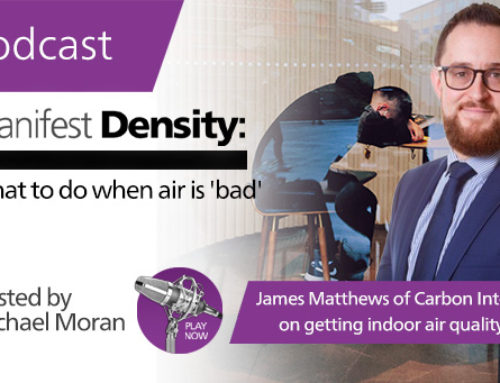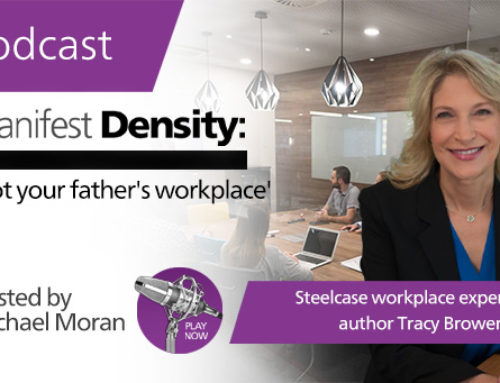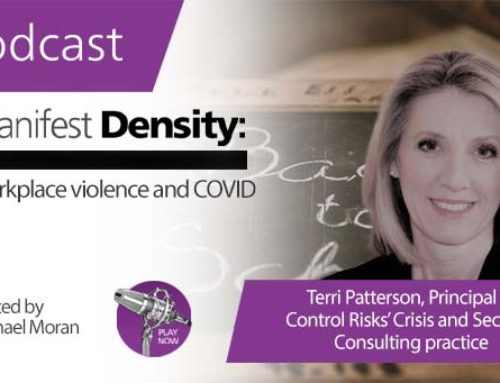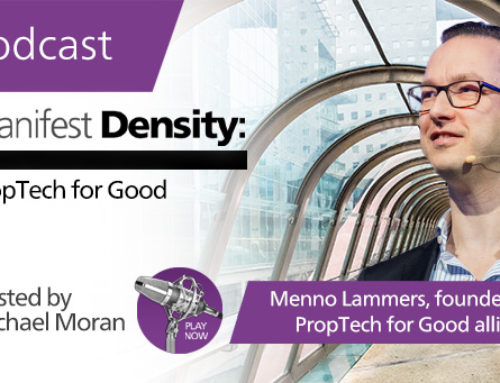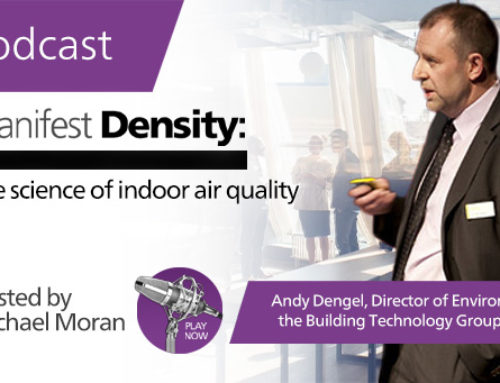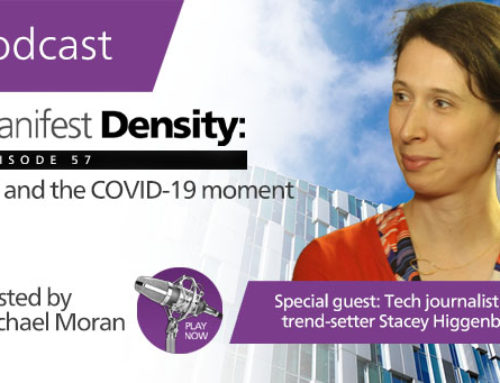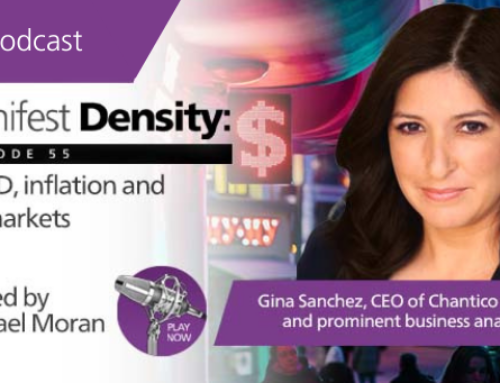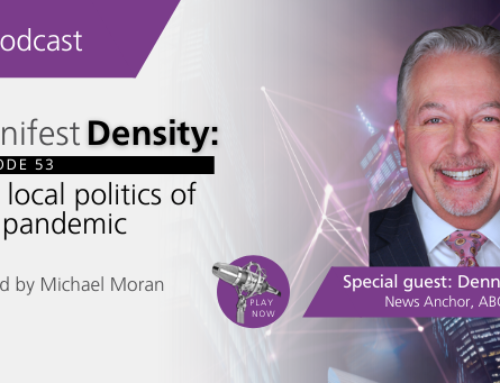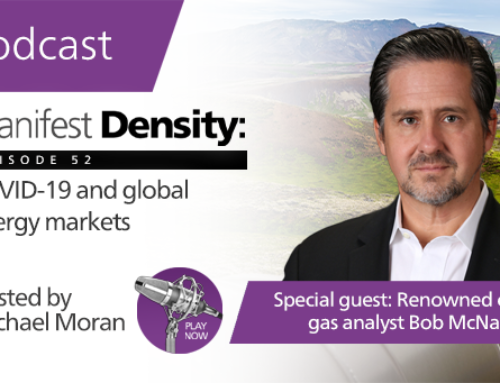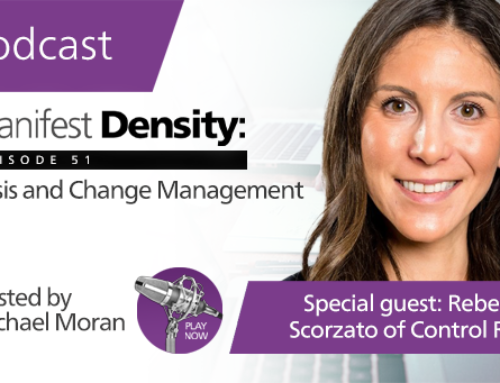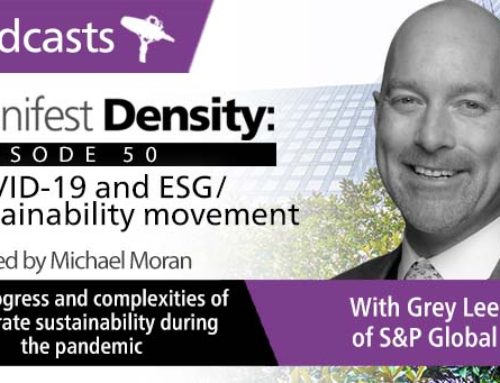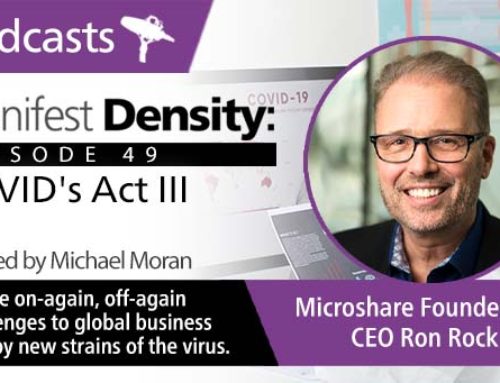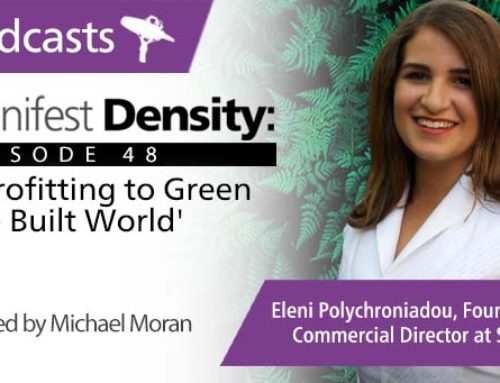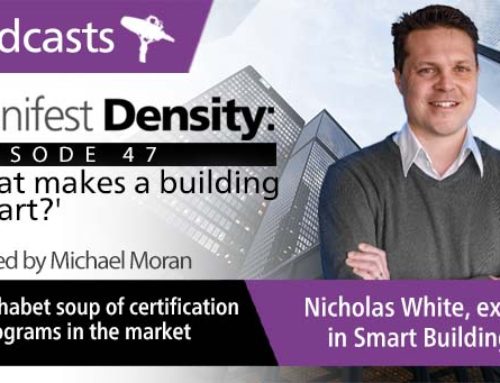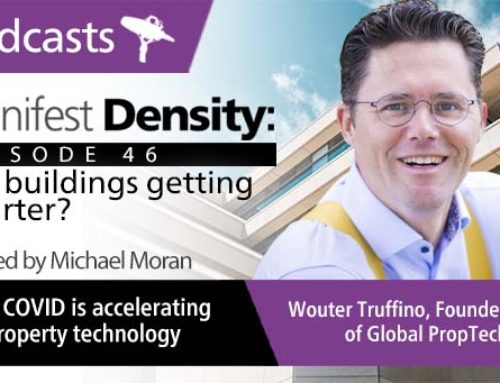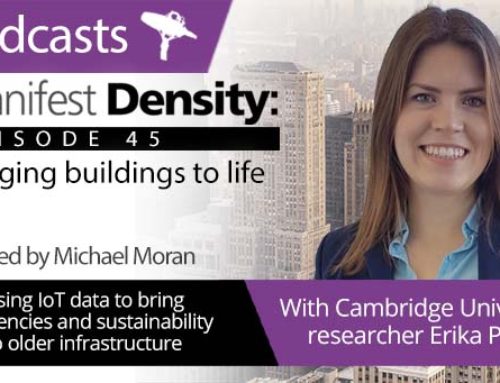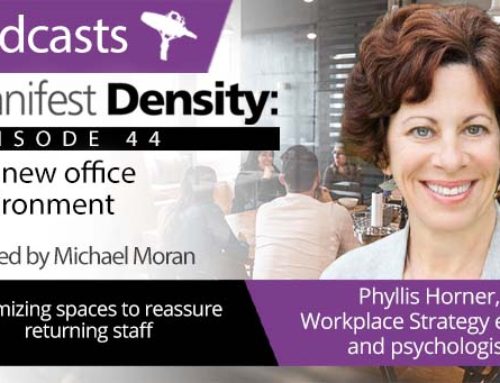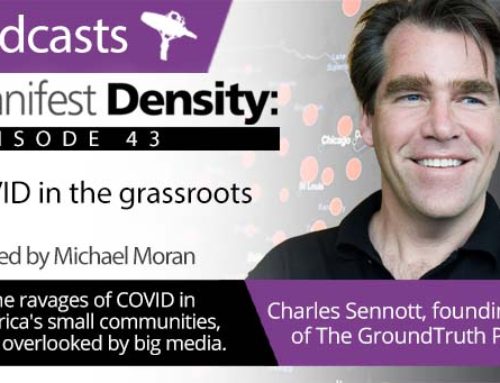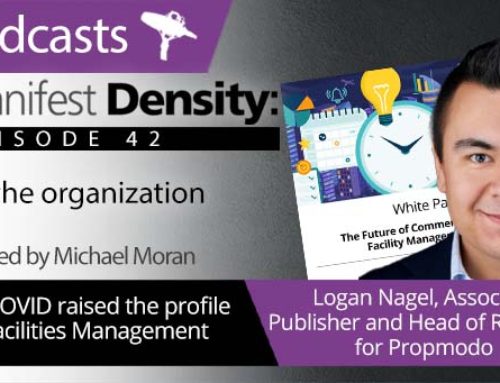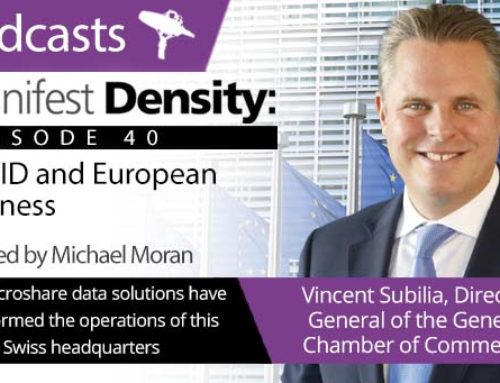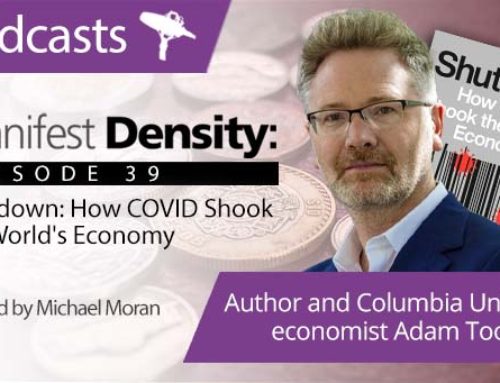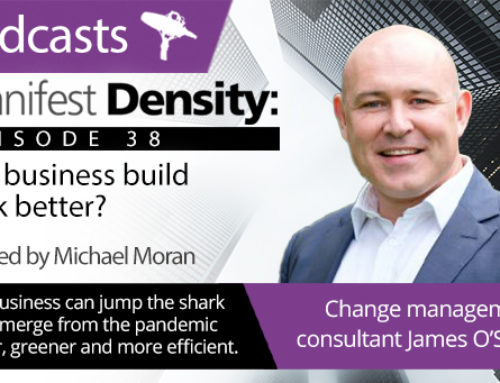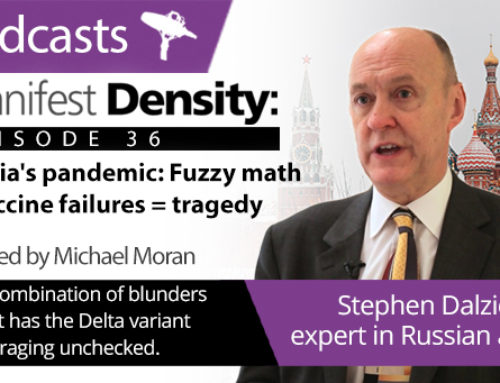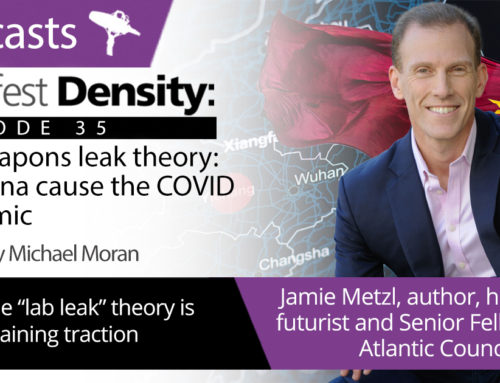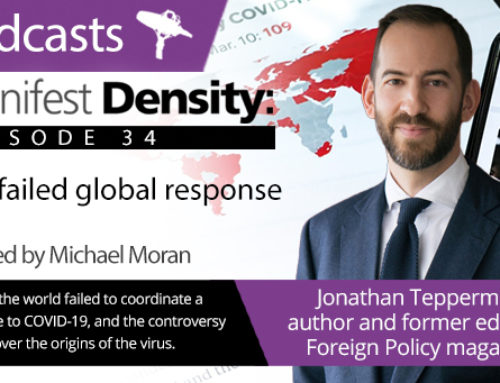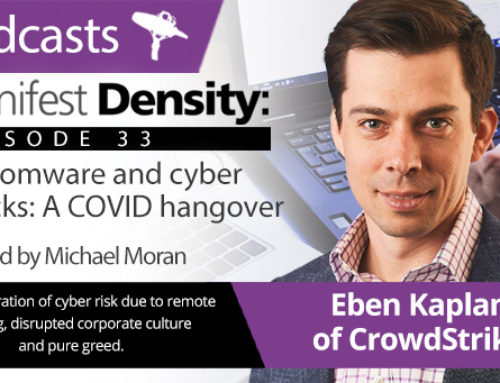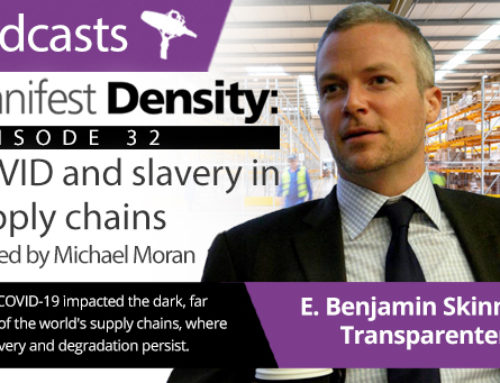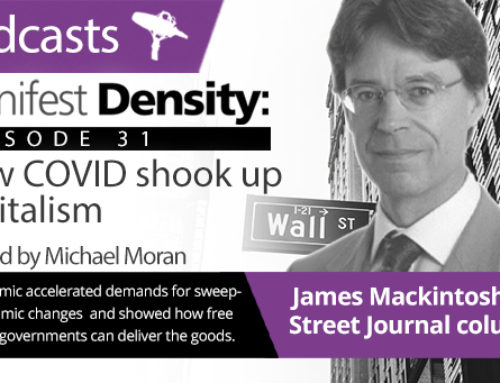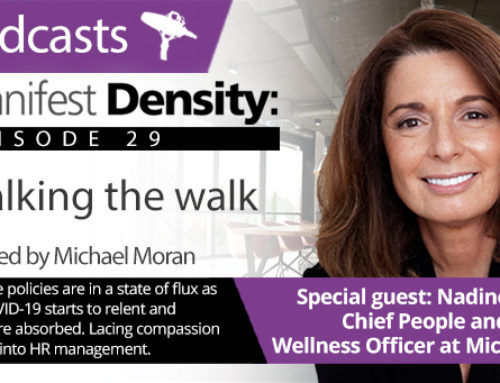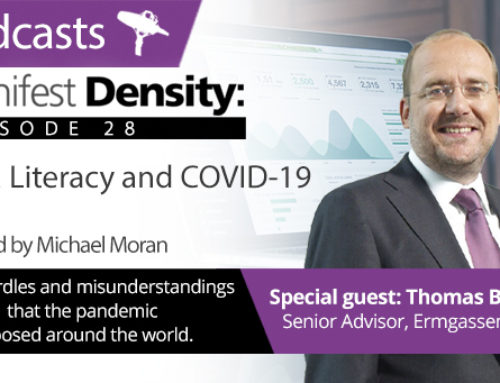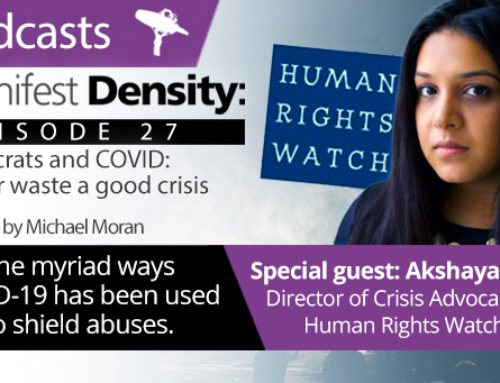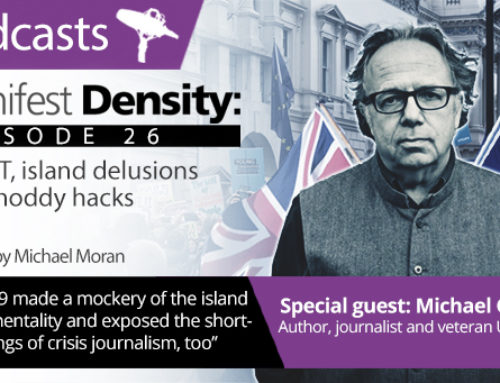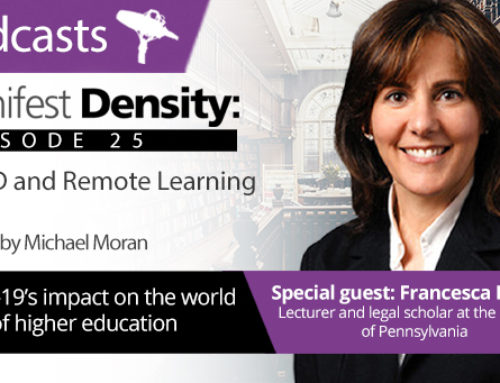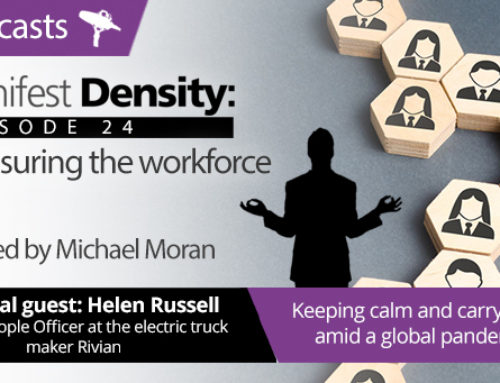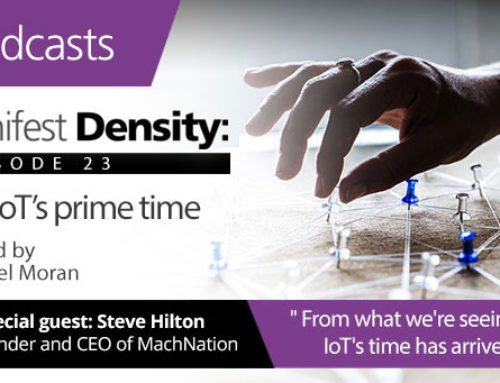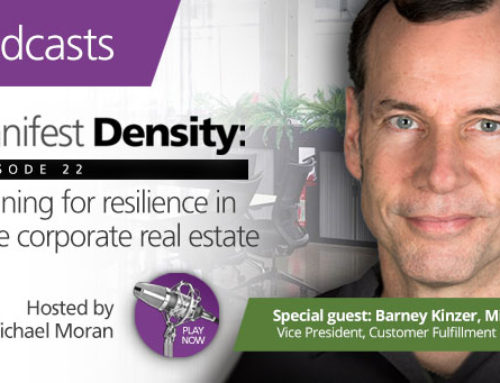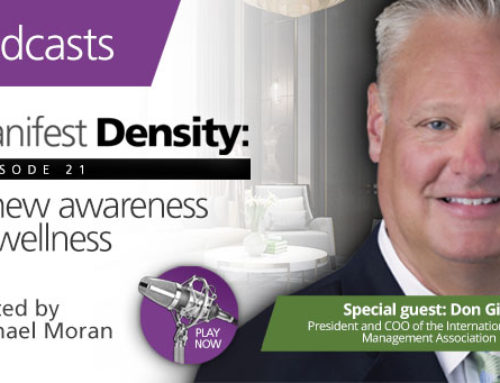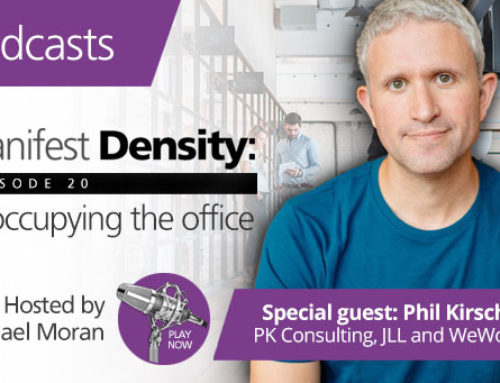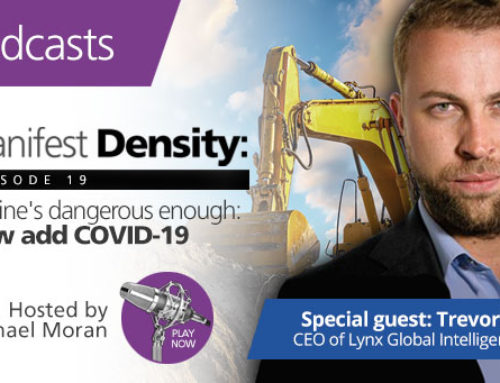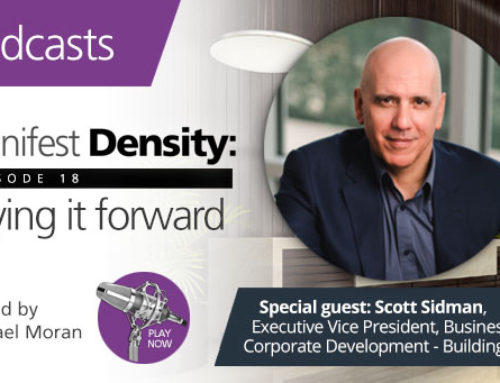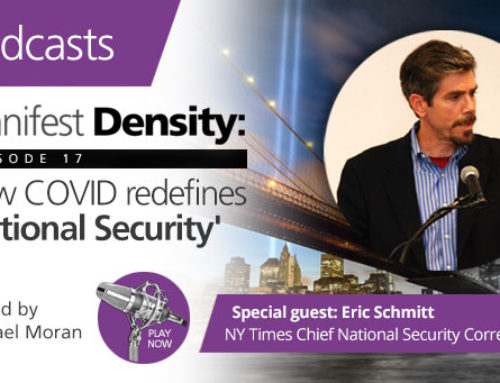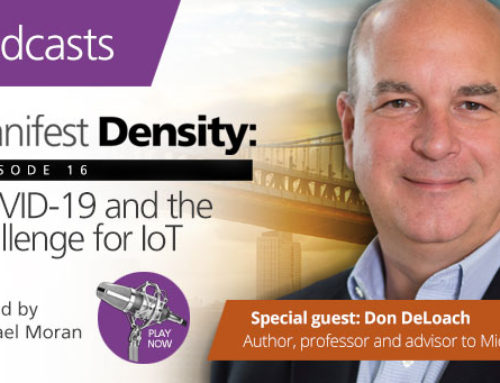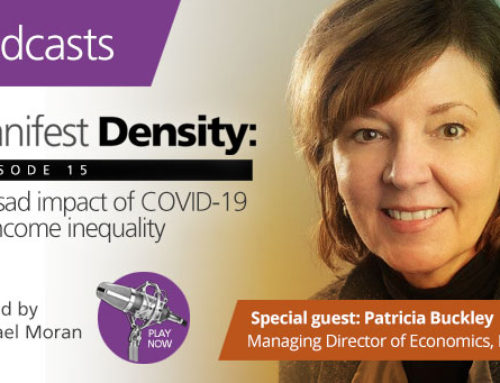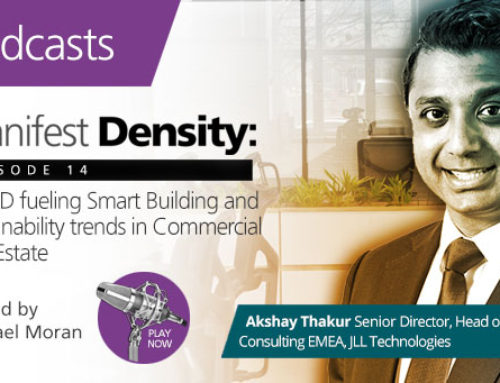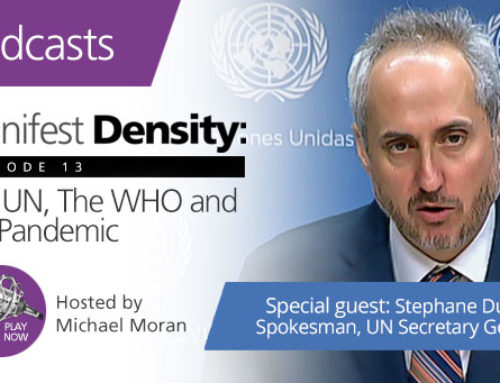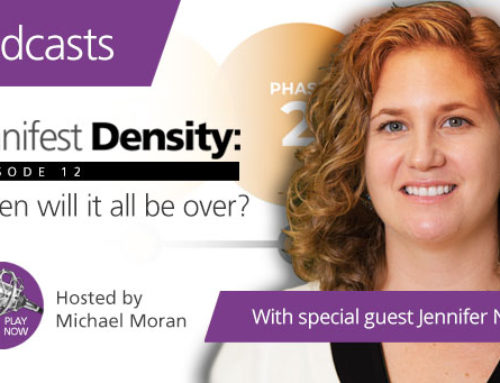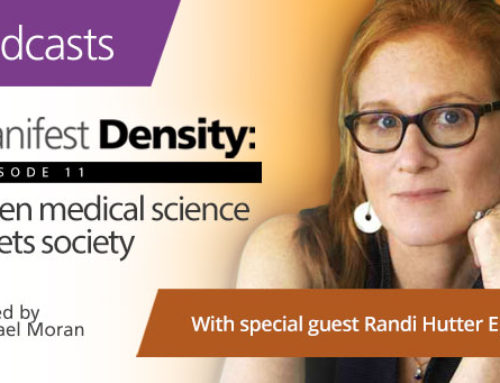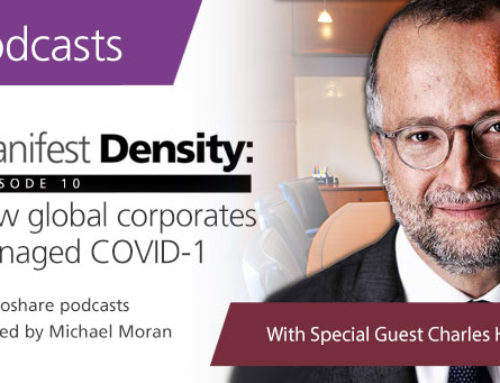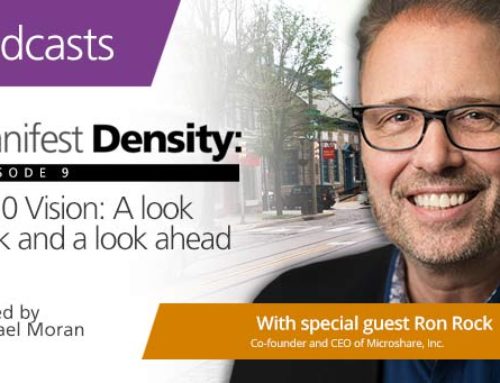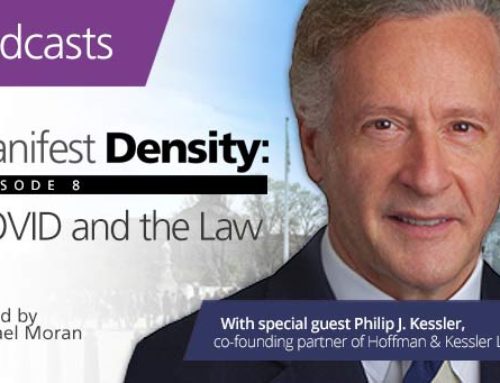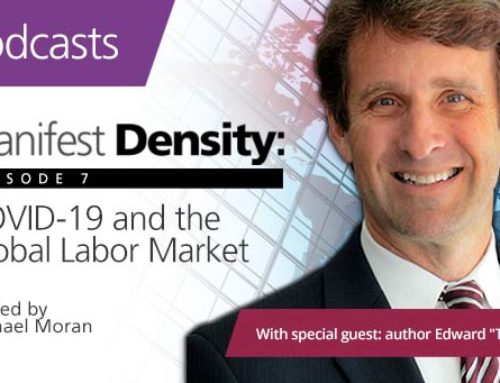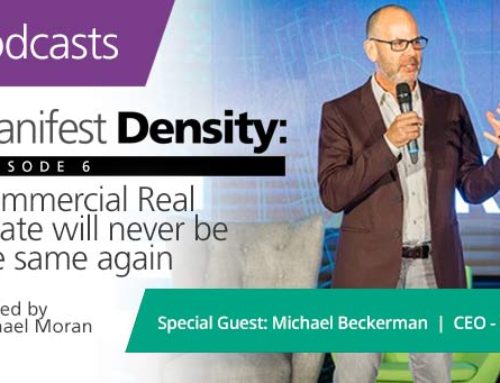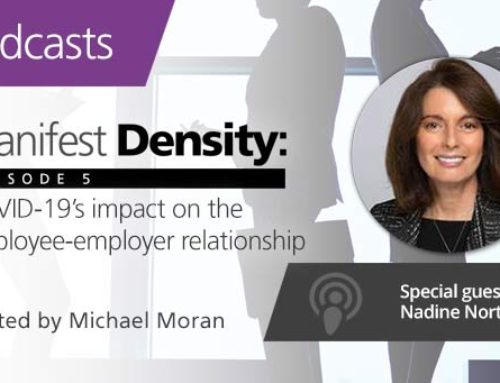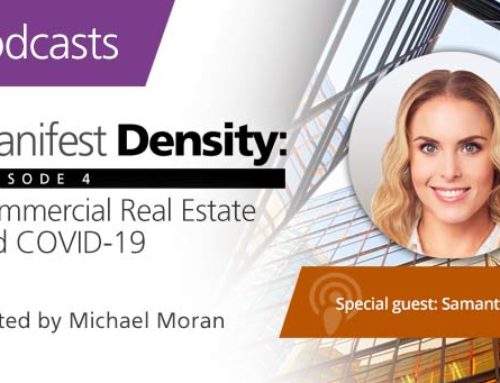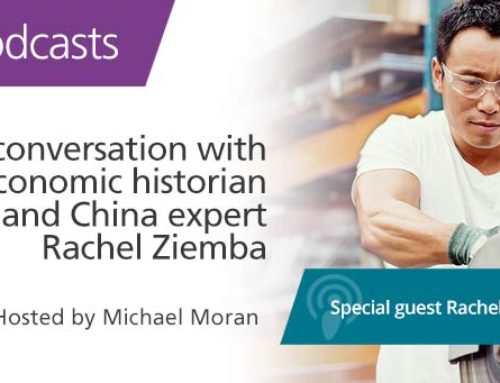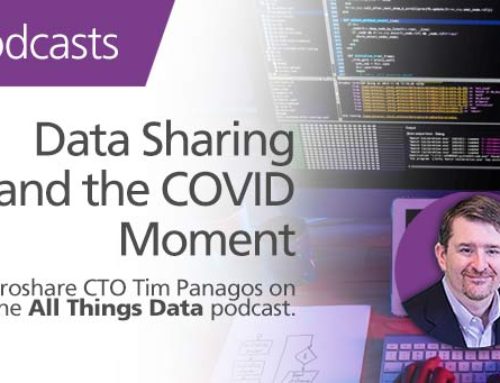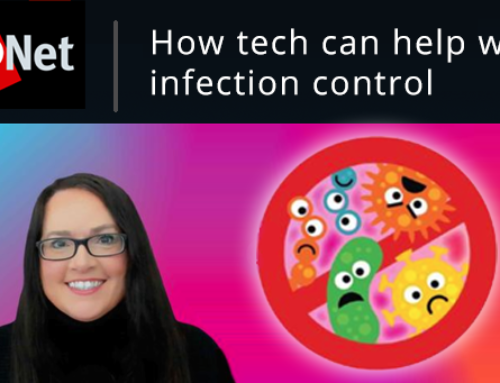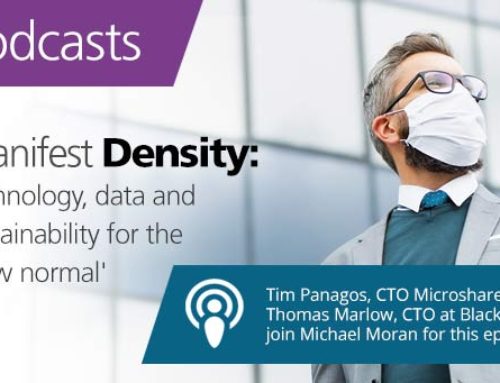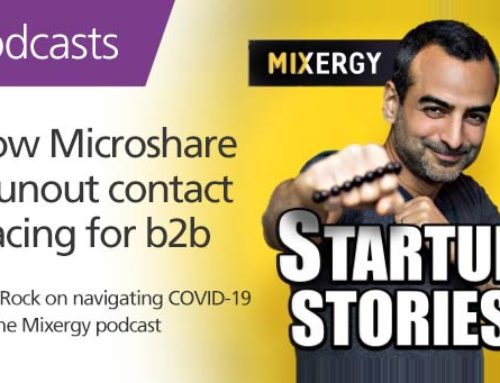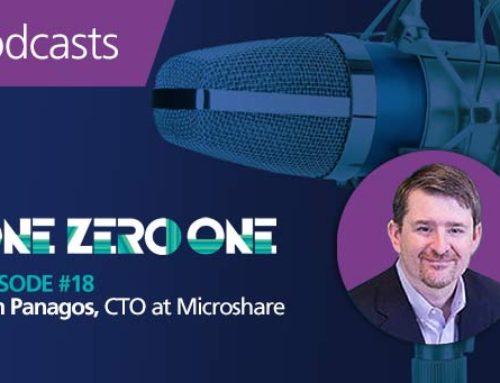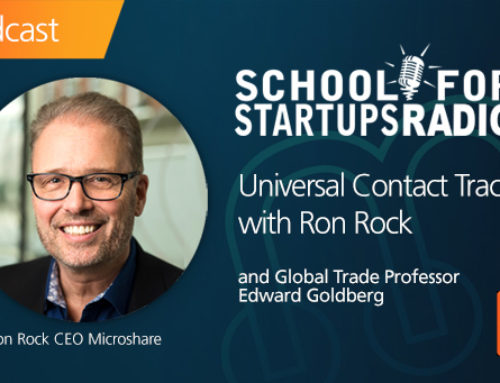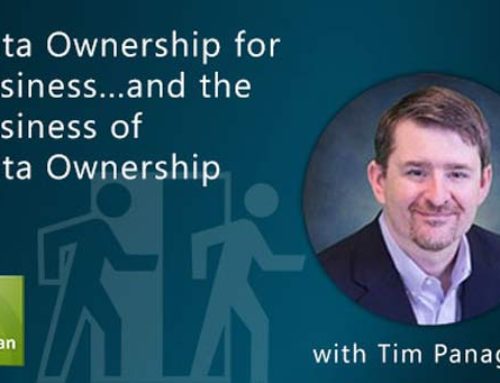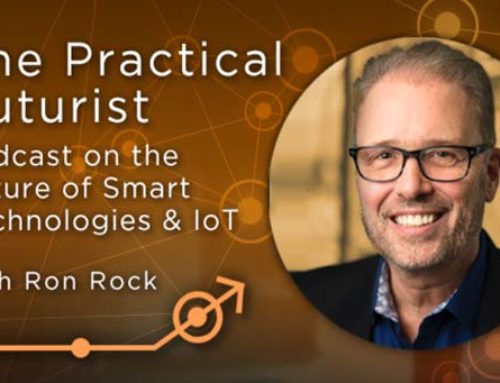Transcript: Ron Rock interviewed by sustainable investment strategist Indranil Ghosh
The following is a transcript of Microshare CEO Ron Rock’s appearance on the Powering Prosperity podcast on Tuesday, May 8. To download the full transcript, visit the Microshare audio podcast page: Microshare Podcasts Ron was interviewed by Indranil Ghosh, author and noted global sustainable investment strategist and author of the forthcoming book: Powering Prosperity: A Citizen’s Guide to Shaping the 21st Century.
 INDRANIL GHOSH: Welcome to Powering Prosperity. Today, I’m joined by Ron Rock, CEO of Microshare, a leading IOC company that provides sensor as a service, solutions to space management, resource utilization, security and anti-infection. Microshare was recently featured on the cover of the Financial Times for its capabilities and optimizing office space and applying contact tracing and hospitals and industrial facilities capabilities that will surely be crucial as we exit the lockdown. Ron, welcome to the podcast.
INDRANIL GHOSH: Welcome to Powering Prosperity. Today, I’m joined by Ron Rock, CEO of Microshare, a leading IOC company that provides sensor as a service, solutions to space management, resource utilization, security and anti-infection. Microshare was recently featured on the cover of the Financial Times for its capabilities and optimizing office space and applying contact tracing and hospitals and industrial facilities capabilities that will surely be crucial as we exit the lockdown. Ron, welcome to the podcast.
RON ROCK: Thank you.
INDRANIL GHOSH: Now, in last week’s podcast, your Chief Risk and Sustainability officer, Michael Moran, talked about a wide range of issues relating to the future of globalization. We’ve got some great feedback on that podcast. And one theme that excited a great deal of interest was how our concept of working space and social contact may be irreversibly changed by the lockdown experience. It was also a lot of interest in Microshare and how it can help to provide solutions to our new reality. So we’re delighted to have you on the podcast because you can speak to both of those points.
Just a bit of background, you know, the big question seems to be, is that if remote working trends continue and if people remain more cautious about crowded settings and demand greater provisions for their personal safety, how will these trends play out across the economy and the way we live and work and socialize? Will it lead to a re-imagination of the workplace? And as people become less tied to their workplace, could it even lead to a reversal of the urbanization trend? Will there be a wave of business process digitization that enables workers to interact with colleagues and clients with less need for physical congregation and in environments where physical presence is unavoidable, like factories, hospitals or light events?
How will we work and interact in a way that provides us with the highest standards of personal safety? Now, some of these questions have been looked into by Tiger Hills, my Matt Lomas, and he’s been investigating how the real estate industry may evolve, be on the crisis and the potential impact that that may have on society. You can read a snapshot in next week’s newsletter. But here are a few statistics that are already jumping out at me.
- First of all, it seems that 25 percent of US CFOs are already looking at real estate as a place to cut costs. That’s according to a PwC survey.
- We also know that with about 30 million Americans out of work, one in four were unable to pay their full April bill for housing in China, although nearly 90 percent of hotels have now reopened. Most are reporting occupancy rates of below 30 percent.
- And here’s an interesting one. In a recent Ipsos Mori poll, only seven percent of Britons wanted closed businesses to reopen if the virus is not fully contained and 70 percent strongly oppose going back to normal in terms of social contact. So those are some striking facts.
So as you look at your business Ron, and how it’s all about managing space and you have solutions for contact tracing and preventing the spread of infection, can you first talk to us about what you’re hearing from there, from your clients? What kind of use cases are they coming to you? Well, one of the big problems they’re asking you to help with.
 RON ROCK: Wow, what a great opening. There’s so many pieces there that I’d love to opine on. Let me start by saying that I’ve read a lot of the same research that you have been reading and talking to people that are trying to figure out what the new normal is, whatever that may be and how it plays out. And one of the analogies that I read recently was comparing the COVID-19 crisis to 9/11. And for those of us that remember air travel right after that event, it took the world about four years to finally get our act together cohesively so that we could all experience a relatively choreographed, orchestrated and seamless security experience. And the first.
RON ROCK: Wow, what a great opening. There’s so many pieces there that I’d love to opine on. Let me start by saying that I’ve read a lot of the same research that you have been reading and talking to people that are trying to figure out what the new normal is, whatever that may be and how it plays out. And one of the analogies that I read recently was comparing the COVID-19 crisis to 9/11. And for those of us that remember air travel right after that event, it took the world about four years to finally get our act together cohesively so that we could all experience a relatively choreographed, orchestrated and seamless security experience. And the first.
Quarters after 9/11, it was an absolute mess and everybody was doing their own thing. And I think it’s important that we realize that we are still at Ground Zero, only eight weeks away from this event kicking in to play. So right now we’re all grasping for solutions. And I think one of the common denominators is that everybody right now, while we are trying to figure out what the new normal is, we don’t know what we don’t know. And that is collectively across the board.
So Microshare, we’ve spent the last several years censoring up what we call digitally twinning, physical work, the physical world. And why do we digitally twin? We do it for two reasons. One is we want to create a virtual replica of our physical world to drive efficiencies. So before C-19, we were already helping companies think about occupancy, how space is being used, how frequently it’s being used. Help them measure CO2 temperature, environmental monitoring to help with things like sustainability and ESG initiatives to help companies maximize their office space. Because, as you said, CFO eyes have already been looking at real estate as one of the most expensive components of their balance sheet.
And so before C-19, we were helping with this very low-cost technical infrastructure that allows me to capture all of this new data from my physical buildings. But as C-19 suddenly became apparent and we start thinking about the new normal. Employees are going to have very different expectations of coming back to the workplace. How does that begin to play out when I go into work? How do I know that we’re socially distancing? How do I know how many people are in the building? How do I know what space has been declined or not? When was it last deep clean? How do I know if some of my fellow employees potentially are affected and might be spreading the virus in some way?
So there’s this whole new set of demands that I think employees are going to look for. We’ve coined the phrase, and a lot of people are saying it, the word “re-occupy,” how do we re-occupy our space? And so there’s going to be very real technical infrastructure needs. But there’s also and I’ve heard this from several significant C-suite executives in the last few weeks. How do we as C-suite step up and make sure that our employees know that we care, that we’re doing the best we can today, knowing that we’re only eight weeks into this and that the world’s going to change?
We’re all going to get very smart in the next several quarters about what day-to-day life is going to look like and what that new behavior – how it plays out. But right now, how do I step up today, in May of 2020, and make a clear statement that my employees matter, that people coming into my facilities matter and we’re doing the best we can right now with the understanding and the technology to be able to create a safe environment for our constituents. And so Microshare has been able to leverage all of the work that we’ve been doing over the last many years and suddenly repurpose this to be very relevant in this COVID-19 world. As you said, we’ve suddenly found ourselves on the front page of the Financial Times last week, an article about us in Fast Company and Karma Impact last week, some other major global publications have interviewed us in the lab. We can we expect a lot more press. And it’s really around how do we create these safe working environments? How do we have the data and the real-time feedback with employees and customers to demonstrate and know as opposed to just guessing that these spaces are clean and that they’re safe? And how do we begin to lay the foundation for the new type of contact tracing that every government, Microsoft, IBM in the last few weeks, had said will be one of the key foundations for how we think about life going forward?
INDRANIL GHOSH: That’s a that’s a really good articulation of what you’re hearing. Can you talk a little bit about some of the technology and the behind your solutions and how you’re providing the safety and sort of the tracing of contacts and movements in different types of workspaces? How does that work?
RON ROCK: Sure. So we’ve decided to go to market on top of a technology called LoRaWAN which is part of the low-power wide area network spectrum of technologies. That’s a lot of technical speak for a very simple concept – low power battery operated sensors that don’t require you to hook up to your internal IT department.
So what this means is that I can get sensors that typically have a five-year battery life or more. And these sensors are everything from leak detection, environmental monitoring, CO2 temperature, real-time feedback, refrigeration monitors, occupancy, fire detection, smoke detection, smart parking, all kinds of granular levels – granular level pieces of data that suddenly I can put these sensors in play.
I can go into existing, what we call brownstone existing buildings, and I can quickly install these sensors and get that data up into the cloud and give business users real time results. Almost immediately, we have clients throughout the world as references that talk about our ability to install hundreds of sensors across multiple floors up and running into average levels. And the reason is that these low power sensors talk to a gateway no bigger than a pack of cigarettes typically plugged into the wall. That gateway has a SIM card. And so suddenly I’m able to capture this data through the SIM card, get it up into the cloud and be able to sell business solutions to business users.
So typically my out of the box solutions, the tip of the spear is occupancy. What we’ve learned over the last few years is occupancy drives everything and C-19 is no exception. People using a space occupancy equals dust. Occupancy equals a need for cleaning. Why don’t I clean bathrooms more frequently that are being used and stop cleaning every bathroom regardless of usage? Same schedule, whether it needs it or not? Why not start cleaning conference rooms and cafeterias and common spaces based on people actually using the space. And oh, by the way, that utilization then begins to provide real value to the CFO to understand why are parts of my building always at a hundred percent capacity?
[00:12:16] We’re a hundred and ten percent capacity. And why are other parts of my building never above 30? And so being able to start optimizing that utilization. All of this becomes possible because of this low power, stick and scan sensors quickly and efficiently. And that’s what allows us to provide these business solutions, even though we’re working in the IoT (Internet of Things) space. I’d like to say most of my customers can’t spell IoT. They’re not buying technology; they’re buying real business solutions.
About a year ago, we started offering indoor Asset Zoning. And so we have hospitals, part of the NHS in the UK that are using our technology to track where are the hospital beds, where are the wheelchairs, where are the infusion machines. And so suddenly I’ve got these very expensive assets. I need to know where they are, especially in this world of C-19, where throughput of the hospital matters so much, getting patients in and cured and out to be able to keep that churn going. So understanding where my indoor assets are become very important. Understanding how many people are using the lobby, the bathrooms, the waiting rooms, all of that. Again, going back to “occupancy equals dust,” while occupancy also equals areas that need to be cleaned. So we have a whole marketing campaign right now around the idea that Clean = Safe. And I can’t afford to deep clean every space all the time. I need to align my clean equals safe with where is being used most often in my facilities. And that’s really how the Microshare solutions are playing out.
INDRANIL GHOSH: What’s very interesting is that between the ability to consolidate space based on what’s not being used in the office and potentially a growing trend towards remote working, that could be a lot of space that’s so consolidated there. And beyond that, know you’re talking about asset maintenance and asset tracking, which can help with efficiencies in other types of workflows. Tell us a little bit about the contact tracing side of things. Because I think in industrial settings and in hospitals, you know how some very simple solutions that also help with that.
RON ROCK: I’m sure most of our listeners know that Apple and Google recently announced a joint project to provide applications on our smartphones that are going to offer some level of contact tracing. And they will be free apps that are available to anybody with a smartphone. And that’s great. But what about environments where smart phones aren’t allowed? What about military installations or a lot of your secure factories that are working in highly regulated industries where employees aren’t allowed on the manufacturing floor without with their smartphone? Or what about organizations that hire a lot of employees to do cleaning and servicing of space where many of those employees don’t own smartphones? And so there’s a whole segment of contact management that is not going to be served by a smartphone only solution.
We concluded a few months ago that contact management and tracking employees inside of a facility has a lot of similarity to tracking hospital beds or wheelchairs. And so we have a technology that’s a combination of Bluetooth, which everybody is familiar with, as well as LoRa, the LoRaWAN technology that I mentioned earlier The combination of these two allow us to use Bluetooth form factors either on assets that we’re tracking or employees. This our Universal Contact Tracing solution. So we have a wristband version, looks like a Fitbit, or we have an employee badge. It’s about the size of a credit card that you hang off of a breast pocket. And these are Bluetooth devices that are broadcasting who you are. So in general, if you and I are working in the same factory and we suddenly stop in a hallway and we start chatting, we’re tracking what we call contact event. And today and this is where I reference the fact that we don’t know what we don’t know and that the rules are constantly going to change because we’re only, you know, less than three months into this.
Today, our clients are defining a contact event as we are closer than six feet for more than 10 minutes. And that registers as an event. So if we both have these Bluetooth devices on our body, either one, these two Bluetooth devices are talking to one another and realize that we now have an event. In addition to that, we have Bluetooth beacons placed all throughout the facility. And these beacons are constantly just broadcasting their location. Hey, I happen to be sitting on the hallway on the second floor outside conference room. And that’s all that beacon does is broadcast. So now our wristband or badge says, hey, Ron and Janelle or are right within six feet of one another. And oh, by the way, they happen to be standing in the hallway outside conference room A. That date is captured and it is anonymized. Only when Ron shows up or calls in tomorrow and says, hey, I’m not going to able to come to work today, I’m sick. Then the employer has the ability to do two things. It has the ability to find out who has Ron had a contact event with in the last two weeks. And where in the factory has Ron been in the last two weeks?
Now I have the ability to isolate a portion of my factory and deep, clean, again, clean, equal, safe. And I have the ability to just contact a subset of my employees and say, hey, you may have been exposed and we’d like you to get tested before you come back to work. And so that’s the business use case. We’re not tracking any personal information. We’re not suggesting that our technology is used to help diagnose whether or not you have an illness. It’s simply a very high-level , universal contact tracing that combined with our occupancy sensors and our predictive cleaning sensors and our environmental sensors. You now bring that whole suite of solutions together. And now you’re creating an environment where you can be communicating with your employees, clean equals safe. We’re taking all of these actions combined to give us the best stability, to help prevent the spread of C-19 and allow you to begin reoccupying the space.
And presumably, if there are similar events or we need safer distancing protocols.
INDRANIL GHOSH: You know, this is the kind of technology that can help factory stay open with different social distance protocols. It can help you build a heat map of where those protocols may or not may or may not be being followed. And so you can go in and train staff to maintain protocols.
RON ROCK: That’s absolutely right. And it gets even more exasperating than that. So the first big client [for Universal Contact Tracing] that we were brought to by our partner, Microsoft, they have 30 factories around the world. Each country right now has different definitions of what is a contact event. And then here in the United States, California’s rules are very different than Massachusetts rules, very different than Pennsylvania’s rules. And these rules are going to constantly evolve. Going back to my TSA and airport security journey that we all went on for years before, you know what’s acceptable, carry on and not what’s allowed to be through the security check or not. All of those things that we now take for granted took massive amounts of coordination and work to figure out to get us to where we are. And we believe that C-19 today and viruses of the future. There’s going to be a whole new set of protocols that evolve over the coming years. And so one of the other things that we communicate with our clients is we are future proofing the solution. Anything you buy with Microshare today, all of the rules are configurable. So what we know for sure is we’re going to need to know environmental occupancy, leak detection, temperature, all of these things are gonna be tracked in offices and commonplaces in the future. The rules will change a lot. But any investment you make in that kind of digital infrastructure today is going to be an investment that you’re going to be leveraging for many, many years to come.
INDRANIL GHOSH: Right. So you’re providing a very flexible infrastructure that can adapt to these changing protocols, allowing potentially, you know, a lot of business continuity in health care, industrial and other settings, and all the while helping to consolidate space and increase asset utilization, which is going to be a godsend to CFO, is in a very tight situation for some time. So I think from that, I think that the value, the benefit is clear for everyone. Can you talk us through a little bit of your business models so we can understand how the business works in terms of its economics?
RON ROCK: Sure. So there is a lot of complexity under the covers and everything that I described. There’s the sensors themselves. There’s the communication protocol. There’s security and encryption. There’s how that data gets transported from the actual sensor up into the cloud and into the Microsoft as your platform is how that data gets translated into useable information, whether it be alerts or dashboards or push notifications. And so you’ve got everything from physical hardware, you’ve got hosting and data storage, you’ve got communications, whether it be through a SIM card over cellular networks or other.
And so we’ve taken all of that complexity and we’ve bundled it in with simple sensing as a service. It’s a pure SaaS model. So we charge on a per sensor per month basis. Our pricing is pretty straightforward. There’s only two ways to think about pricing. One is the volume of sensors that you commit to and the other is the duration of your commitment. We’ve taken all of the different types of sensors and we’ve broken them down into two simple categories Category 1 and Category 2. And it’s the same price. Any sensor in Category 1 is the same price. Any sensor in Category 2 is the same price. So all of that complexity is taken away and it’s a flat price, fixed price per month. All in. So there’s no extras. You’re not paying extra for more communication or more data storage or more types of dashboards that you’re looking at.
Everything’s a flat Sensing-as-a-Service. Like most SaaS offerings, we price monthly, but we charge twelve months in advance. So our typical customer will sign up for three or five years of service that that services then billed annually in advance. And it’s all up. That means that the customer doesn’t have to worry about if the batteries go dead or not. They don’t have to worry about if there’s a better sensor out there tomorrow and we upgrade those. It’s really the same as paying any utility. We’re simply providing the service. And the service that the customer wants is they want the business results, they want the data, and that’s what we provide to business users.
Typically our sales does not include I.T. Sometimes IT will come in at the end just to validate the security or whatever data protocols that they need to be concerned about. But we make it very simple to price, to buy, to budget for, and to install and then to manage with non-technical staff.
INDRANIL GHOSH: Well, that certainly sounds very simple for the customer to manage. And they’re getting a tremendous amount of value. And there are societal benefits that are going to come from this as well in terms of, you know, the amount of space saved so that real estate can be used for other purposes, essentially allow people to live in low cost locations, create more disposable income that they can spend in other sectors and so on and so on. You know, I’m not surprised you’re getting a lot of good press because of all these different benefits. So tell us a little bit about how you’re seeing your order pipeline and where the demand is coming from now.
RON ROCK: So our order pipeline has begun to rapidly expand much faster than we originally thought it would in the beginning of the year when C-19 hit. We had a lot of our traditional business in the pipeline. We had some big global opportunities that that closed and then we found that those opportunities were put on hold. You know, there’s lots of businesses out there that have literally just stopped in their tracks. And I worry and wonder whether they will come back to their run rates of what they were doing just in January, a few months ago, January 2020, with these run rates.
So that type of a lot of the traditional occupancy predictive cleaning kind of stopped because office spaces are empty. And a lot of these types of companies, their revenues have dried up. But at the same time, we’re seeing lots of demand grow around this conversation of re-occupy. And right now, the biggest wave that we see is in manufacturing and distribution warehouses that are going to be driving distribution, whether we’re working at home or whether we’re working in the office.
We’re still going to be consuming a lot of products, a lot of services and a lot of supplies. We’ve heard a lot about the global food chain and we see what’s happening with companies like Tyson right now stepping back and having to shut down part of their factories. We see what’s happening with Amazon in France. Again, not being able to meet the safety, the Clean = Safe standards to keep their employees happy and the government siding with the employees. So think about anybody that is the next wave of manufacturing that’s going to come online and then the accompanying distribution networks that are going to be affected and a lot of those businesses. You’re right into that space that we talked about of for one reason or the other. Not a lot of smartphones in the building, in the space. And so that seems to be the areas that we’re seeing a lot of demand right now happen from a delivery perspective.
We have two significant partnerships and we’re we’ll be announcing a third later this month with a similar sized company. We have a significant relationship with Microsoft globally. Microsoft has introduced us to some of our biggest clients. We also have a global relationship with Arrow Electronics. Arrow helps us to deliver at scale, globally, these types of solutions. So even though we are a relatively small company, we have offices in Philadelphia, Boston and London. The relationship with Microsoft and the relationship with Arrow allows us to sell and deliver our solutions on a global scale.
We’ll be adding a third significant partner to that that will also augment those capabilities. So today we see the pipeline growing. There is a global shortage in the technology that’s being used to deliver these. And a lot of the factories that make the components for some of this technology slowed down for a period of time. Many of them are just now starting to come on board. So we’re actually advising customers today that for large global orders, we need to get the order secured now. We need to get a deposit now. And we’re now queuing up delivery for mid to late Q3 and Q4. And that’s just because the demand that has suddenly sprung up for these kinds of solutions. Nobody anticipated twelve weeks ago.
INDRANIL GHOSH: You’re seeing a demand also need the office space sector, maybe CFO is trying to consolidate that space and with remote working, trying to make some real estate’s cost savings.
RON ROCK: We’re seeing a lot of conversation in that space. It’s still I think we’re still a little ahead of the curve there because the office workers are not as urgent to re-occupy as the factory floor. And the distribution centers are under a lot of pressure to start delivering those manufactured products, whether it be food or merchandise or retail, apparel, all the things that we buy from Amazon, all the things that we buy from eBay, all the things that are in the food chain. And so in office space, it’s a much more complex conversation right now.
I’m successfully working from home. I’ve been reading a lot of the same material that you have. It’s fascinating to me, you know, thinking about going to seven-day work week. Why should everybody have the same two days off thinking about going to two shifts a day as opposed to the normal nine to five? The CFOs looking at commercial real estate have a lot more knobs and dials that they can turn right now because a lot of your commercial real estate, whether be lawyers or marketing or traditional white-collar jobs, they’re functioning a little bit better in this work from home environments. So they have a little bit less urgency. They still have urgency, but not as much as getting that factory back to producing food to get to all of us while we’re working at home. And so I see commercial real estate lagging a little bit, and I’ll differentiate that from hospitals and health care. Obviously, hospitals and health care, there’s they’re starting to see the wave flatten out.
Everything that you read seems suggests we’re going to have a second wave that may be bigger than the first. And so I think there is going to be a more sense of urgency to get a lot of these healthcare clinics and hospitals going as well. So I think its factories and distribution. I think it’s health care. And I think commercial real estate is going to be right on the coattails. And by the way, that’s not a complete no. We have some commercial clients that are actually placing orders right now, but we’re not seeing the same scale as we are in the manufacturing and distribution yet.
INDRANIL GHOSH: I think something that you’re pointing out in many different ways is that the road to recovery is going to be long and fraught with different obstacles and bottlenecks. So I think maybe a lot of people have in mind the sense that, yes, okay, as soon as the lockdowns are complete, we’re gonna go back business and, you know, there’ll be hopefully some sort of a V or U-shaped recovery, at least in certain sectors of the economy. And as long as it’s locked down, doesn’t last too long, hopefully we’ll be OK, especially with the economic stimulus. What you’re describing, I think, is a snapshot of the real world where there’s an urgency to re-occupy factories. But for the want of sensors, among other things, and many other sort of supply bottlenecks, that will be it actually won’t necessarily be that easy to re-occupy those critical manufacturing and distribution facilities. And so there’s going to be a lag in the way the economy responds, even when we’re back to some semblance of, you know, working and living in ways we were previously accustomed to.
RON ROCK: I think that’s right. And, you know, and I thought I spoke to the CEO of a fairly sizable global distribution company last week. And when I said to him, I couldn’t even deliver so middle to end of Q3, at first he was shocked because he feels this immense pressure to get this technology in place by the end of May or the beginning of June. But then when I shared with him that, look, this isn’t my constraint. This is a global constraint. And we may be able to piecemeal a thousand here or a thousand there, but you’re not going to get forty thousand delivered and ready to go anytime in the next 90 to 120 days.
However, this solution is then going to be absolutely mission critical for years to come. Well, that puts a different perspective than the U- shaped recovery. We’re not talking about tests that were needed at Ground Zero for a few weeks after 9/11. We’re talking about infrastructure that needs to be put in place for the long haul. And suddenly, when you have that perspective waiting 90 days or 100 days to get this infrastructure in place, by the way, we can start with other things faster, some things that are more available. But you’re absolutely right that this is this is I think we’re in this for the long haul and people need to realize the sooner you get. Going the sooner you’re going to have a success before the end of 2020. Having the infrastructure, some of the infrastructure in place for the new normal and the Clean = Safe play.
INDRANIL GHOSH: It’s been terrific talking to you. I think some of the points that this is driving home to me is that, you know, this crisis like once before the crisis is gonna be a crucible of innovation. And I think we’re seeing some great innovation here from micro share. And we’ll need more of these innovations to get through this very challenging crisis. And some of the changes and these transformative, transformative innovation that we see isn’t likely to stick and hopefully disrupt things in a very positive way going forward.
So in the long run, as you say, we’re investing for a more positive future. So with that. Ron, thank you so much for being on the podcast. I really appreciate all your great insights.
RON ROCK: Thank you very much. You know, it’s been a pleasure.
INDRANIL GHOSH: And if you’d like to support Ron’s effort through business partnership or investment, please reach out to him on our Rock at www.microshare.io. We’ll look him up on LinkedIn and all those details will be in the newsletter.
[00:36:19] Thanks for listening.

